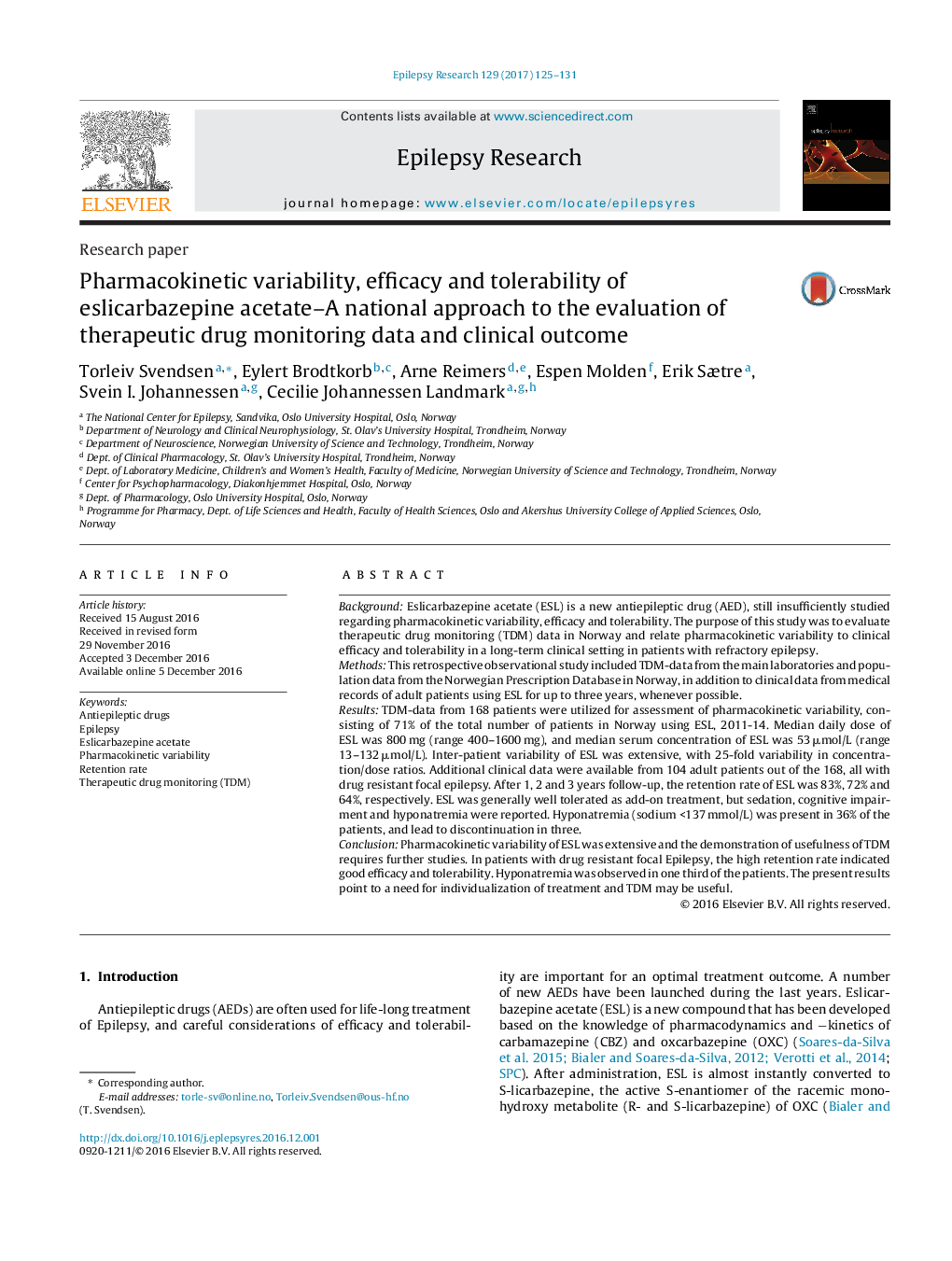| کد مقاله | کد نشریه | سال انتشار | مقاله انگلیسی | نسخه تمام متن |
|---|---|---|---|---|
| 5628780 | 1579894 | 2017 | 7 صفحه PDF | دانلود رایگان |

- The pharmacokinetic variability of ESL was extensive (25 fold).
- Based on TDM-data from the main laboratories in Norway, 71% of the patients using ESL was covered.
- The retention rate of ESL was 83%, 72% and 64% after 1, 2 and 3 years, respectively.
- Hyponatremia was observed in one third of the patients but less pronounced than with OXC.
BackgroundEslicarbazepine acetate (ESL) is a new antiepileptic drug (AED), still insufficiently studied regarding pharmacokinetic variability, efficacy and tolerability. The purpose of this study was to evaluate therapeutic drug monitoring (TDM) data in Norway and relate pharmacokinetic variability to clinical efficacy and tolerability in a long-term clinical setting in patients with refractory epilepsy.MethodsThis retrospective observational study included TDM-data from the main laboratories and population data from the Norwegian Prescription Database in Norway, in addition to clinical data from medical records of adult patients using ESL for up to three years, whenever possible.ResultsTDM-data from 168 patients were utilized for assessment of pharmacokinetic variability, consisting of 71% of the total number of patients in Norway using ESL, 2011-14. Median daily dose of ESL was 800 mg (range 400-1600 mg), and median serum concentration of ESL was 53 μmol/L (range 13-132 μmol/L). Inter-patient variability of ESL was extensive, with 25-fold variability in concentration/dose ratios. Additional clinical data were available from 104 adult patients out of the 168, all with drug resistant focal epilepsy. After 1, 2 and 3 years follow-up, the retention rate of ESL was 83%, 72% and 64%, respectively. ESL was generally well tolerated as add-on treatment, but sedation, cognitive impairment and hyponatremia were reported. Hyponatremia (sodium <137 mmol/L) was present in 36% of the patients, and lead to discontinuation in three.ConclusionPharmacokinetic variability of ESL was extensive and the demonstration of usefulness of TDM requires further studies. In patients with drug resistant focal Epilepsy, the high retention rate indicated good efficacy and tolerability. Hyponatremia was observed in one third of the patients. The present results point to a need for individualization of treatment and TDM may be useful.
Journal: Epilepsy Research - Volume 129, January 2017, Pages 125-131